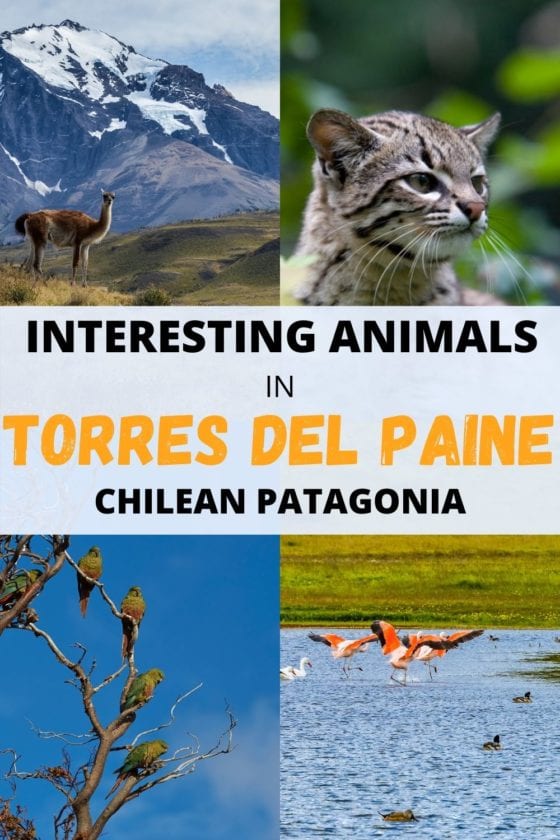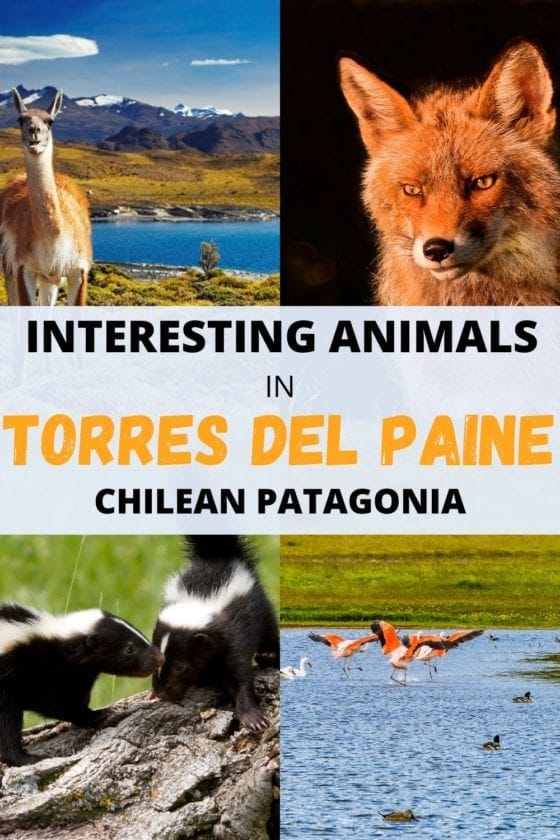13 most interesting birds and animals in Torres del Paine and Patagonia
Torres del Paine National park in the Chilean Patagonia is one of the most incredible destinations in the world. It offers some of the best hiking trails in the world, full of glaciers, turquoise waters, and towering mountains. But what some people might not realize is that there are some very interesting and even endangered animals in Torres del Paine.
With 120 types of birds, 250 types of plants and 25 mammals, Torres del Paine really cannot complain about the lack of diversity in flora and fauna.
There are even different wildlife spotting trips and safari tours in the park available for those nature lovers that would like to not miss seeing some hidden gem! Of course, many of the animals in Torres del Paine can be seen just by walking around in the park.
Anyways, enjoy the list of the birds and animals in Torres del Paine which I found the most interesting.
This post may contain affiliate links, which means that if you purchase anything via them, we might earn a small commission – at no extra cost to you. Check our affiliate disclaimer for more information.
1. Guanacos – the most popular Torres del Paine animals who you’ll see everywhere
One of the most commonly seen animals in Torres del Paine.
These close relatives of llama and alpaca, native to South America, are visible all over the park. They’ll be lazily grazing grass on the side of the road or scratching their legs in the middle of the road.
Related: Do you know the differences between a llama and an alpaca?
If you’re driving a car in Torres del Paine, make sure to break or – even better – stop if you notice some guanacos close to the side of the road. As we were told when renting our car for our Patagonia itinerary, if there’s one, there will be others, and they tend to jump in front of the car.
Guanacos are big animals, a meter high at the shoulder, and they live in herds. Usually, these herds consist of several females and youngsters, and one male. If you see a single guanaco roaming around, it’s most probably a male who doesn’t have his herd yet.
During the breeding season, you can see fierce fights seen between males who try to bite their opponents’ private parts. Wild!
The only predator of the guanaco is a puma, whose population has grown in the last years due to conservatorship efforts.
Although guanacos seem to not mind humans, don’t forget that they are wild animals, so they can become dangerous.
2. Huemul deer (South Andean deer)
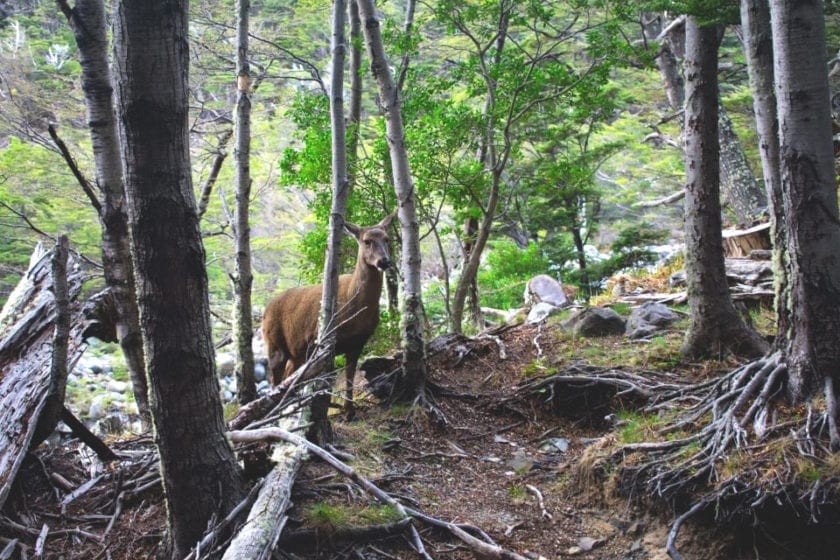
The national animal of Chile, featured on its coat of arms! – the South Andean deer looks a bit like a reindeer.
Another interesting fact – the huemul have been declared a natural monument of both Chile and Argentina.
Huemul is the Southernmost deer in the world.
Unfortunately, they are endangered because of, among other things, loss of habitat, hunting, and diseases. Luckily, there are protection programs at work to save this lovely animal.
The huemul are very shy, so it’s extremely rare to see them just like that. Plus, the fact that this animal lives in the mountainous and rarely visited parts of Torres del Paine and blends in perfectly with nature doesn’t really help.
If you want to photograph this animal in Torres del Paine, try the forests around Grey glacier or the hike to the base of the Torres. Otherwise, they are mostly seen in the west area of the park.
3. Puma
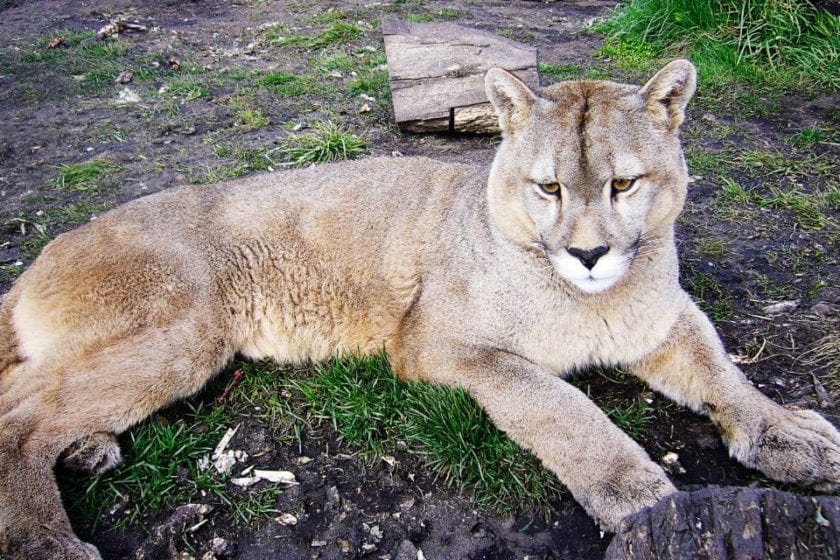
The largest big cat in Patagonia, the puma, otherwise known as the mountain lion, is not easy to find unless you are very lucky (or unlucky – depends on how the encounter goes) or take a dedicated tour to find them. Yes, there are puma tracking tours available!
The biggest puma population is in Torres del Paine, where this animal has an abundant source of its favourite meal – guanaco.
Pumas live solitary lives, except when the females nurture their young. They are not known for their love of humans and can get territorial, but most often the cat will just hide. That’s why it’s better to take a guided tour to see this animal in Torres del Paine, which is, for now, the only place with dedicated puma sighting tours.
If you see one that looks dangerous, step back slowly, don’t turn your back, and try to look taller and more intimidating. If it doesn’t work and the puma still attacks you, the last resort is to punch it in the nose, its weakest spot.
4. Geoffroy’s cat – one of the most elusive animals in Torres del Paine
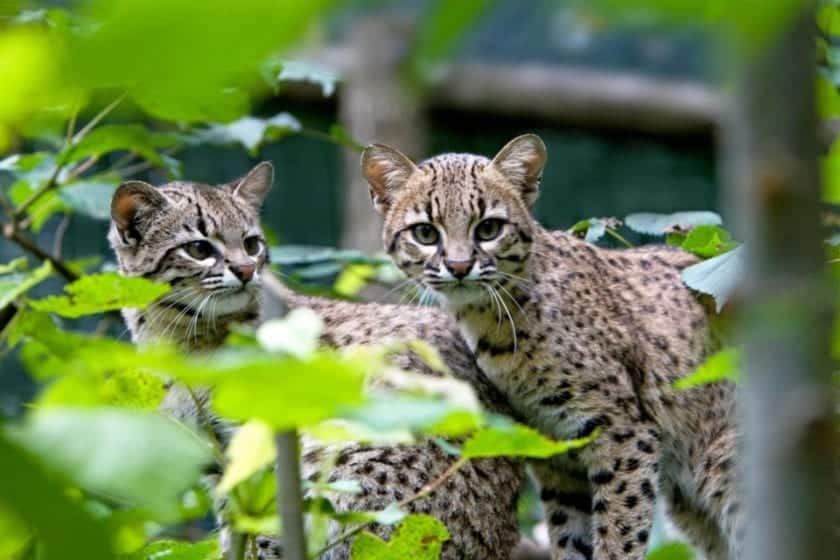
A nocturnal hunter kitty, who likes to eat small birds and rodents.
Sightings of this animal in Torres del Paine is really rare, because of coming out to hunt at night part. Some naturalists don’t see Geoffroy’s cats for many, many years, so if you do notice one, consider yourself lucky. And maybe buy a lottery ticket when possible.
They look very similar to a house cat even in size, and their fur varies in colour, although it usually has large black spots on it. The fur ranges from grey to black and is reportedly very soft.
This cat lives a solitary life, only coming in contact with others to mate. Little kittens begin to live independently from their moms at around eight months of age.
Geoffroy’s cats used to be endangered, as they were hunted heavily, but thankfully the population numbers have bounced back.
5. Southern grey fox (Zorro Gris or Chilla)
A small fox, with a max weight of 5,5kg, the grey fox is also called Chilla or Patagonian fox. Because of its small size it mostly feeds on rodents and birds.
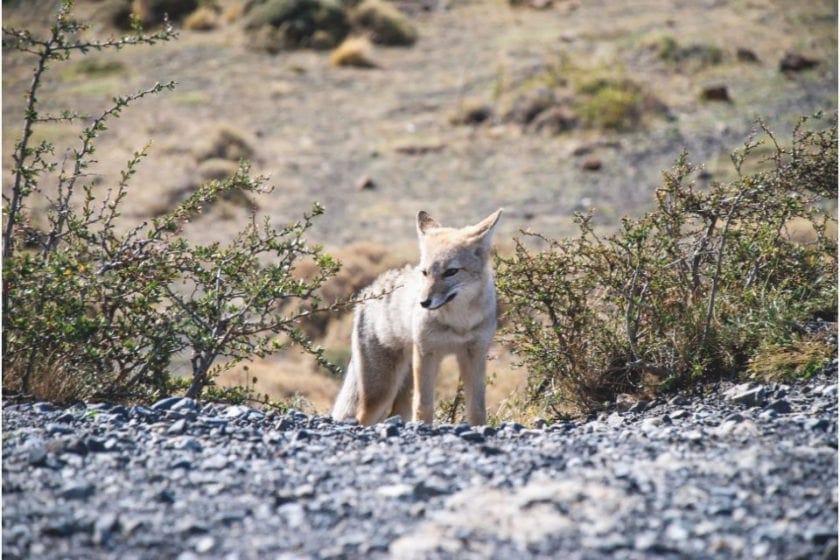
Grey foxes are not shy, so, although they mostly live in the steppe and grasslands of Torres del Paine. It’s not unusual for them to visit accommodation and say hi, as they are very curious animals.
If you want to increase your chances to see the smaller of the two foxes in Torres del Paine, go to the Laguna Azul, Sarmiento and Lago Nordenskjöld.
6. Red fox (Zorro culpeo or Andean fox)
The red fox gets its name, not surprisingly, from the reddish colour of the fur of its legs and head.
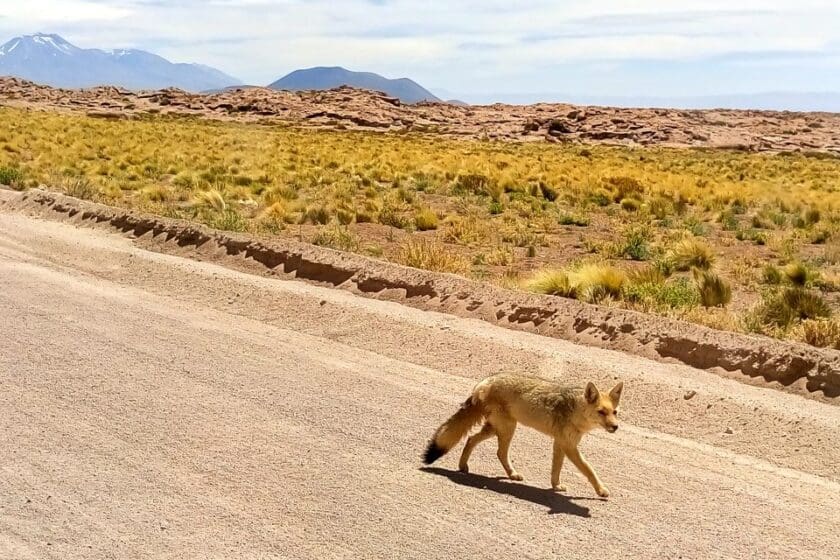
It’s bigger than the grey fox, though, with its weight going up to 13,5kg. In fact, the red fox is the second largest canid on the American continent. Their primary target for food is sheep!
The red fox used to be a very curious and bold animal, although lately it’s getting a bit more inconspicuous and is hiding in caves and vegetation. Nevertheless, the name culpeo is thought to be derived from the Mapuche word for madness.
If you’d like to see the zorro culpeo, look for it in the temperate forests, mainly around EcoCamp, but know that it lives in a wide variety of places, including deserts and high plateaus.
7. Armadillo
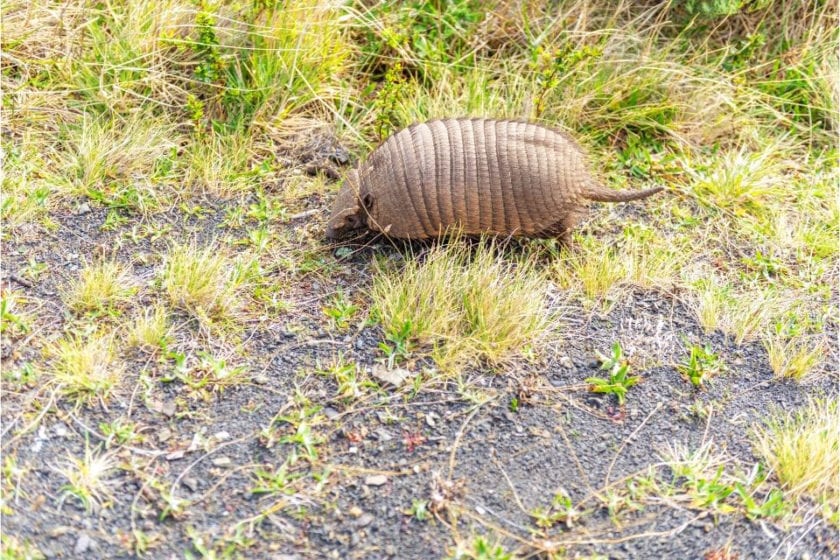
You can find two kinds of armadillos in Torres del Paine – Quirquincho Peludo (hairy) and Piche Patagon (dwarf). The main difference between the two is the time when they are active.
The hairy armadillo is nocturnal in summer, and in the winter it either hibernates or emerges in the daytime. This animal has a lot of hair protruding between the plates of its shell.
The dwarf armadillo is active during the day, foraging for food and exploring. Their shell body is round and made of small rectangular scutes of black and cream.
Both of the species are solitary and shy and live in burros.
8. Hog-nosed skunk (Andes skunk or Chingue)
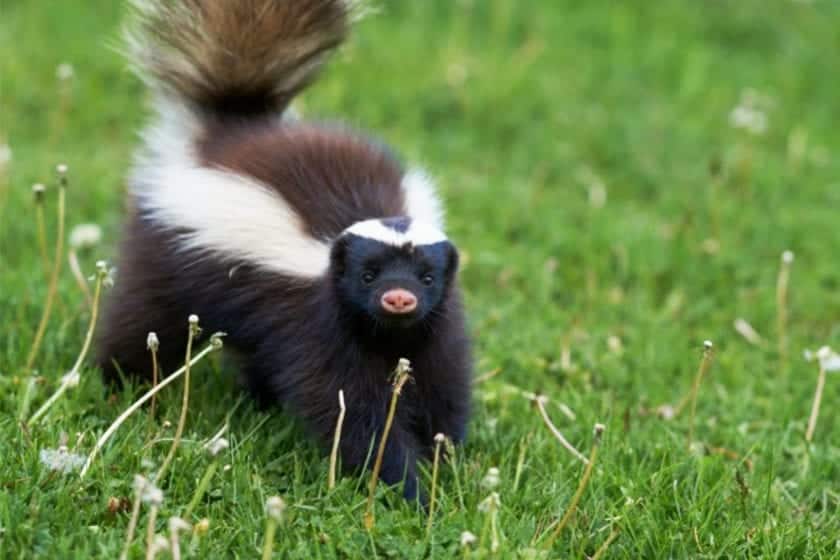
The little smelly dudes, yes, these animals live in Torres del Paine as well. Don’t scare them, as they will spray you with the nasty stinky substance that will make you stink for ages.
Solitary animals, the skunk live in deep burrows which they close off for the winter. They come out and look for food mostly at night, so it’s not easy to find them, but occasionally they can be noticed in the late evenings.
Mainly skunks can be seen in the more desert areas of the park. If you’d like to risk it and see the smelliest animal in Torres del Paine, go to the sectors of Lagunas Amarga, Sarmiento or Azul.
9. Nandu – Darwin’s rhea (rhea Americana)
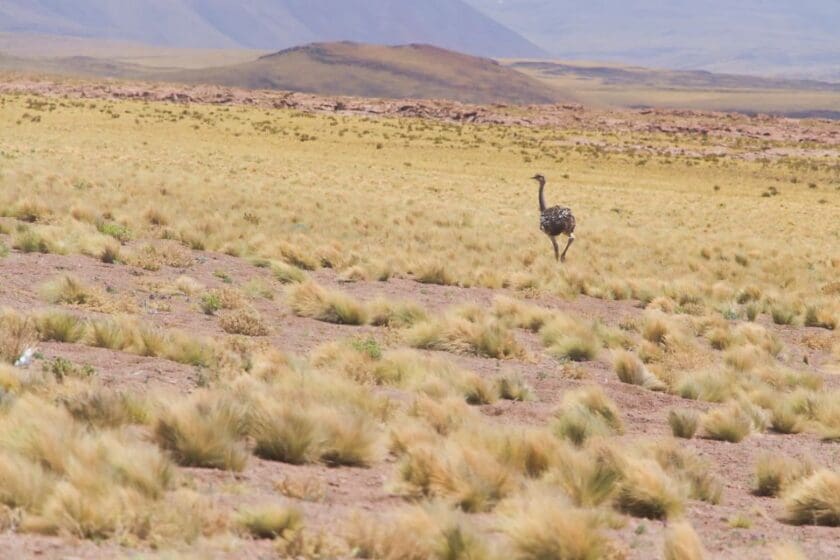
Patagonia’s largest flightless bird, nandu look a lot like ostriches. It’s one of the fastest animals in the world, reaching speeds up to 80km/h when running. Interestingly, they spread their wings when running.
They are big animals – males reach up to 170cm in the head. And the males are the ones who tend to the youngsters, even guarding their eggs and fighting off predators.
If you’d like to see the rhea, look for groups of them in the pampas of Torres del Paine where they look for food.
Unfortunately, similar to other animals in Torres del Paine, they are near endangered because of habitat loss.
10. Condor (Andean condor)
The most iconic bird of Torres del Paine, the condor’s wingspan can exceed 3m and it can fly even 7000m meters high! To put it in context, many popular aeroplanes such as Boeing 737 fly at 10000m. It’s the largest vulture in the world, and it can live to even 70 years of age.
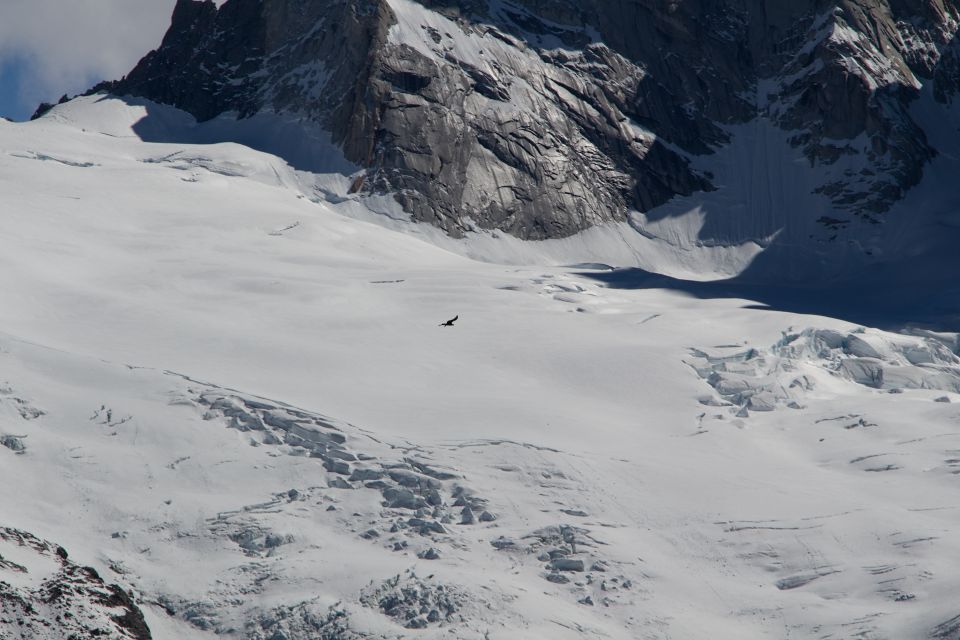
Condor accompanies huemul on the Chilean National Shield. As with other animals, it’s endangered now due to habitat loss (do you notice a theme here?) and secondary poisoning from animals killed by hunters. Luckily, their numbers are holding up in Torres del Paine.
If you’d like to see condors in the wild, the best bet would be to go to dedicated lookouts.
There is even a hiking trail in Los Glaciares National park in Argentina called Mirador Los Condores if you have an option to visit there!
Otherwise, you can see them soaring high in the sky looking for leftovers or in the evenings when they come down to their nests on cliff faces.
11. Austral parakeet
I was really shocked to learn that there are actual parakeets living in Torres del Paine! Who knew that this crazy weather would suit them?!
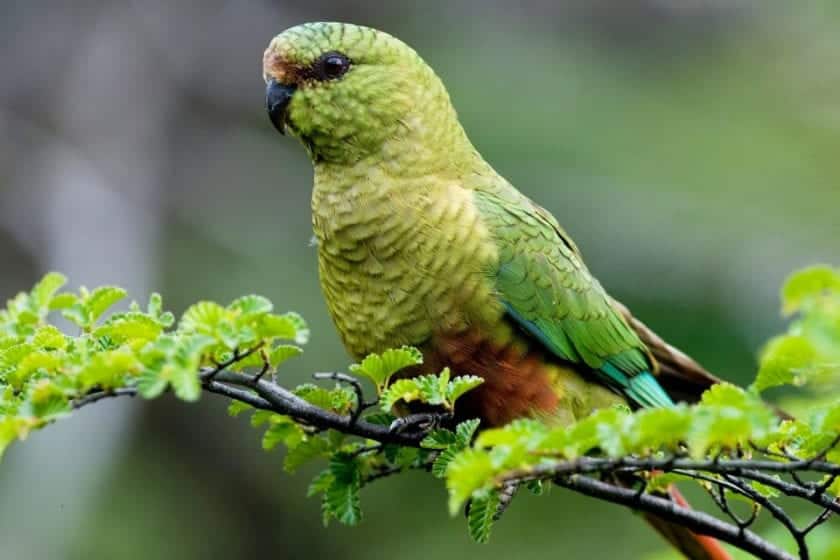
They live in small flocks in the forests and woodlands of Torres del Paine where it feeds on berries, seeds, and fruit amongst other small things. The birds have distinct feather colours of green and red.
12. Chilean flamingo
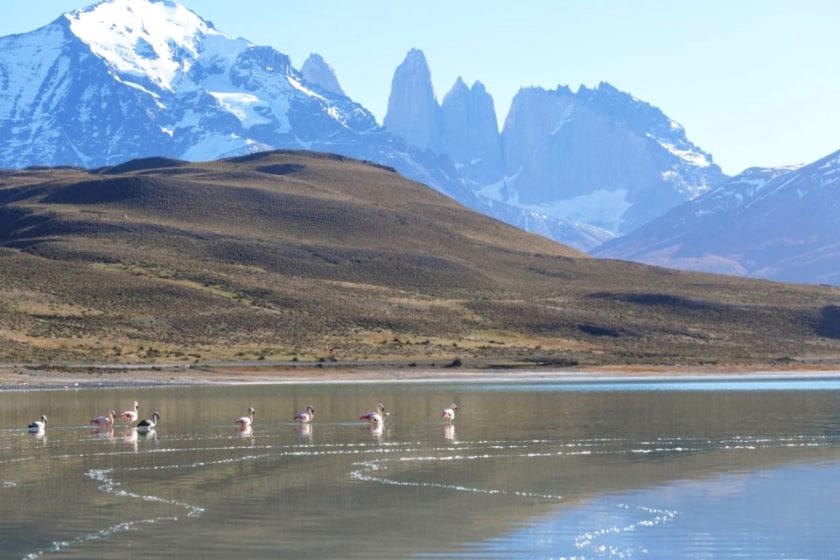
Another bird that I was surprised to learn lives in Torres del Paine. Although, considering that you can find flamingos high in the altiplano of Bolivia, why was I surprised?
Anyways, the distinctly pink Chilean flamingo can be found in Patagonia’s salt lakes, lagoons, estuaries and fjords. In Torres del Paine, though, you can find this animal in the Lagunas Amarga and Azul, for example.
Compared to the American flamingo, the Chilean one has a blacker beak. It even differs a bit from the two other flamingo species that can be found in the north of Chile, this animal in Torres del Paine has grey legs with pink knees.
Imagine the sight of the pink flamingo amongst the mountains and glaciers of Torres del Paine – much more special than the usual picture of them on the white sands of the beach, don’t you think?
13. Magellanic penguins
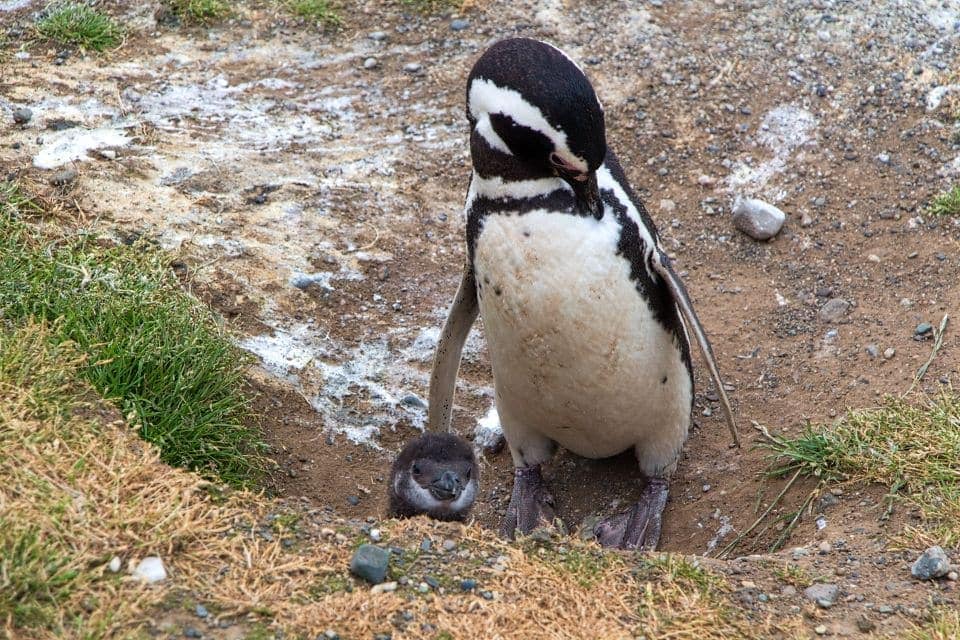
Yes, there are penguins in Punta Arenas – that’s basically Torres del Paine!
The Magellanic penguins are South American penguins, and they go to an island near Punta Arenas to breed. They’re middle-sized and grow to be 61–76 cm (24–30 in) tall. So rather tiny. And, as you can see, the grown penguins’ coat is distinctly black and white.
Magellanic penguins are mostly seen in Patagonia, that is, the South of Chile and Argentina, and the Falkland Islands. Some, though, go to places such as Australia, Antarctica, New Zealand, and even as high up as Brazil and Uruguay.
Anyways, we saw them on Isla Magdalena, where they go in December-ish to breed. Walk right next to some penguins, hear them talk (yell), and even see some babies! It was definitely one of the highlights of our trip.
How best to see Torres del Paine animals?
The best way to ensure that you see the animals in Torres del Paine is to take a dedicated tour.
There are different kinds of tours available – from dedicated spotting trips to photography tours. You just have to think of what fits your itinerary and budget.
There are even hotels available, such as EcoCamp Patagonia or Explora Patagonia, that have tours to discover wildlife around Torres del Paine.
If you’re keen on spotting the wildlife without paying anything extra, just keep your eyes open and go to the suggested places!
If you don’t feel like going on a trek to some more remote places, there are horse riding or boat tours available as well.
In the end…
There are so many incredible animals in Torres del Paine! Who knew that some of them could enjoy and thrive in such harsh weather conditions? Like the parakeets and flamingos, for example.
It’s sad to see that so many of the animals in Torres del Paine are endangered. Make sure to be mindful and respectful in your actions when visiting the park, please!
If you’d like to see some more interesting animals that can be found around Patagonia, there are dedicated trips from Punta Arenas and Puerto Natales.
We ourselves went to the Isla Magdalena from Punta Arenas to see the Magellanic penguins. It was a half-day tour that included a walk on the island itself and then took us to see sea lions as well! This trip was one of the most incredible adventures of our vacation, which was filled with spectacular experiences. If you’d like to see a part of our trip around Chile, check out our Patagonia photo diary!
Pin for later!
